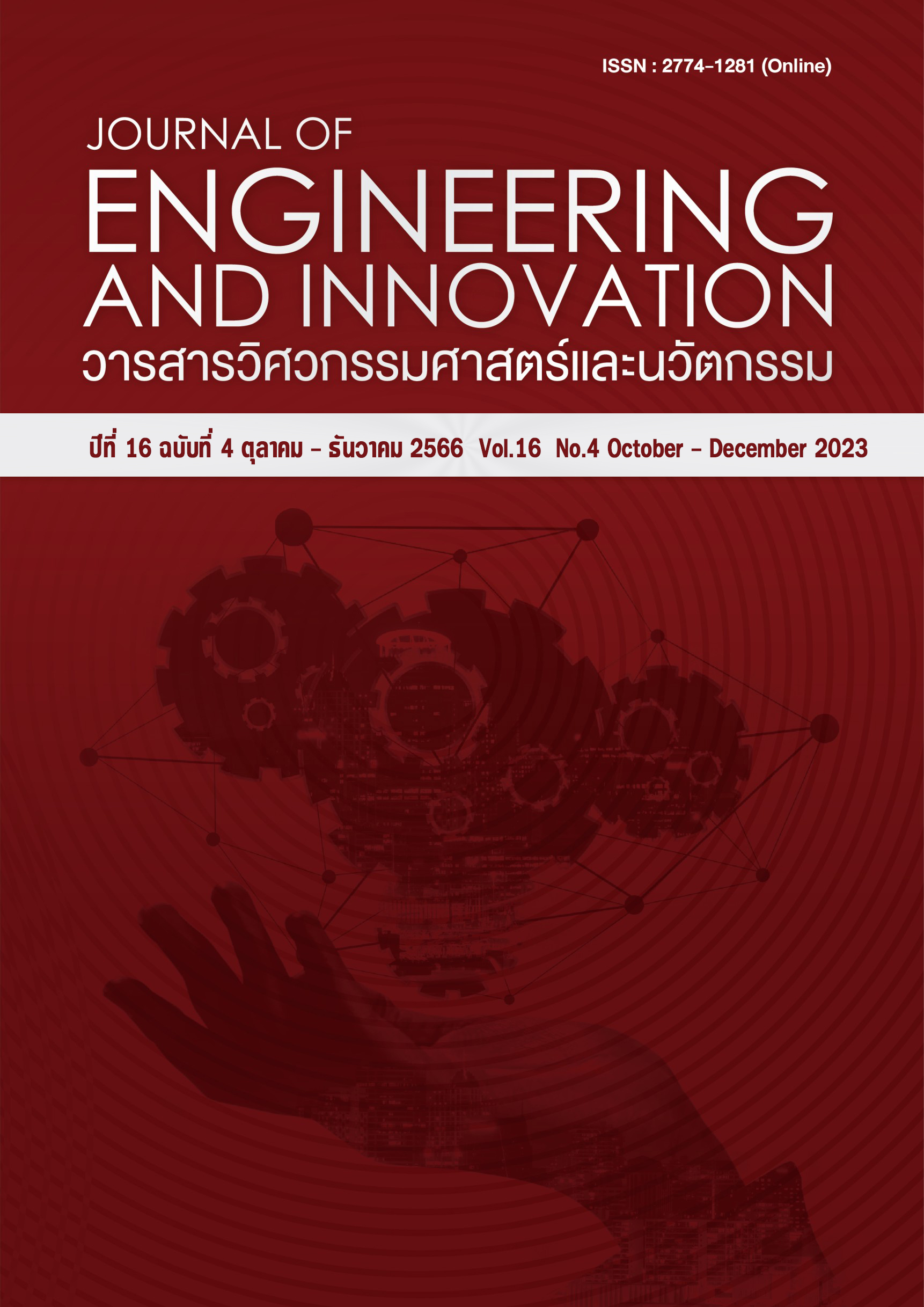Determination of the number of forklifts in the process of loading-and-unloading the export fiberboard using simulation
Main Article Content
Abstract
This article aims to improve the efficiency of the fiberboard transferring process from the warehouse of a case study seaport to the general cargo ship. From the transferring process study, it was found the problem of the number of forklifts using for lifting fiberboard in the transferring operation are not enough. Consequently, those problem results the averaged berthing time of general cargo ship exceeded the defined standard of the seaport. So, the simulation using Arena program was applied with focusing on the study of finding the appropriate number of forklifts. It was found that the number of forklifts increased from 6 to be 8 for berth operation area, and it decreased from 5 to be 4 for work on the ship, resulting the averaged berthing time of general cargo ship has decreased from 188.95 hours to 147.04 hours, or it is 22.18 percentage.
Article Details
References
Chaophaya Terminal Internation Co.,Ltd, 2020, Port of Songkhla, Available from: https://thsgz.ctic.co.th/frontpage#news. [Accessed 18th October 2020]
Sarwar N. Time Related Key Performance Indicators and Port Performance: A Review of Theory and Practice, Faculty of Technology and Maritime Sciences, Vestfold University College, Norway. Report, 2013,
Duangphastra C, Rudjanakanoknad J. Selection of key performance indices for ports under the port authority of Thailand. Journal of Transportation and Logistics, 2017;10(1): 55-69.
Kotachia M, Rabadi G, ObeidG MF. Simulation modeling and analysis of complex port operations with multimodal transportation. Procedia Computer Science 20, 2013. 229-234.
Lau YKH, Lee MYN. Simulation study of port container terminal quay side traffic. AsiaSim 2007: 227–236.
Sriphrabu P, Chamnanlor C. Improving service efficiency of a container yard through simulation modeling. In Proceeding of 7th International Conference on Industrial Engineering and Applications (ICIEA), Bangkok, Thailand, 2020. p. 419-424.
Sriphrabu P, Chamnanlor C. A discrete-event simulation study to increase the performance of the empty container yard in a case-study seaport. UBU Engineering Journal, 2021;1(4): 1-13.
Kongyai P, Pisuchpen R. The Simulation for Productivity Improvement in Truck Loading System. Master of Engineering (Engineering Management), Department of Industrial Engineering, 2019.
Kongthong T, Chamnanlor C. Simulation modeling to increasing the efficiency semi-trailer production. KKU Research Journal (Graduate Studies). 2021;21(3): 13-26.
Aeimsum-ang S, Boonmee A. Simulation for the pineapple in retort pouches process improvement: a case study. UBU Engineering Journal. 2020;13(1): 114-126.
Nundee P, Neungmatcha W, Boonmee A. Determining the number of trucks suitable for increasing the utilization of sugarcane mechanical harvesters using simulation models. Thai Journal of Operation Research. 2018;6(1): 22-30.
Boonmee C, Kasemset C. Application of simulation technique for refrigerated truck sequencing based on job sequencing policies. Thammasat Engineering Journal. 2020;6(1): 35-45.
Rattanaubol S, Srisuwannapa C. Simulation for improving service effectivness of pediatric and medical clinics in outpatient building of Phatthalung hospital. Journal of Science Ladkrabang. 2013;22(1): 107-116.
Chaiwuttisak P, Yangwai W, Meesat W, Somkeartvera S. Simulation of a Queuing System to Increase the Service Efficiency of Outpatient Department: a Case Study of Mueangpan Hospital Lampang Province. Journal of Science Ladkrabang, 2020;29(1): 10-23.
Banks J, Carson JS, Nelson BL, Nicol DM. Discrete-Event System Simulation.4th ed. Upper Saddle River, New Jersey: Prentice-Hall; 2005.
Sargent RG. Verification and validation of simulation models. In Proceedings of the Winter Simulation Conference (WSC '11). 2011, 183–198.
Ransikarbum K, Kim N, Ha S, Wysk RA, Rothrock L. A highway-driving system design viewpoint using an agent-based modeling of an affordance-based finite state automata. IEEE Access. 2017;6: 2193-2205.

